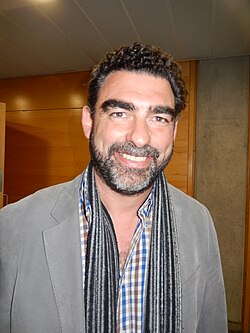Nick Lane Quote
To visualize this dance, the transparent components of the cell had to be coloured using a stain. As it happened, the stains that were best able to colour the chromosomes were acidic. Unfortunately, these stains tended to dissolve the mitochondria; their obsession with the nucleus meant that cytologists were simply dissolving the evidence. Other stains were ambivalent, colouring mitochondria only transiently, for the mitochondria themselves rendered the stain colourless. Their rather ghostly appearance and disappearance was scarcely conducive to firm belief. Finally Carl Benda demonstrated, in 1897, that mitochondria do have a corporeal existence in cells. He defined them as ‘granules, rods, or filaments in the cytoplasm of nearly all cells … which are destroyed by acids or fat solvents.’ His term, mitochondria (pronounced ‘my-toe-con-dree-uh’), was derived from the Greek mitos, meaning thread, and chondrin, meaning small grain. Although his name alone stood the test of time, it was then but one among many. Mitochondria have revelled in more than thirty magnificently obscure names, including chondriosomes, chromidia, chondriokonts, eclectosomes, histomeres, microsomes, plastosomes, polioplasma, and vibrioden.
To visualize this dance, the transparent components of the cell had to be coloured using a stain. As it happened, the stains that were best able to colour the chromosomes were acidic. Unfortunately, these stains tended to dissolve the mitochondria; their obsession with the nucleus meant that cytologists were simply dissolving the evidence. Other stains were ambivalent, colouring mitochondria only transiently, for the mitochondria themselves rendered the stain colourless. Their rather ghostly appearance and disappearance was scarcely conducive to firm belief. Finally Carl Benda demonstrated, in 1897, that mitochondria do have a corporeal existence in cells. He defined them as ‘granules, rods, or filaments in the cytoplasm of nearly all cells … which are destroyed by acids or fat solvents.’ His term, mitochondria (pronounced ‘my-toe-con-dree-uh’), was derived from the Greek mitos, meaning thread, and chondrin, meaning small grain. Although his name alone stood the test of time, it was then but one among many. Mitochondria have revelled in more than thirty magnificently obscure names, including chondriosomes, chromidia, chondriokonts, eclectosomes, histomeres, microsomes, plastosomes, polioplasma, and vibrioden.
